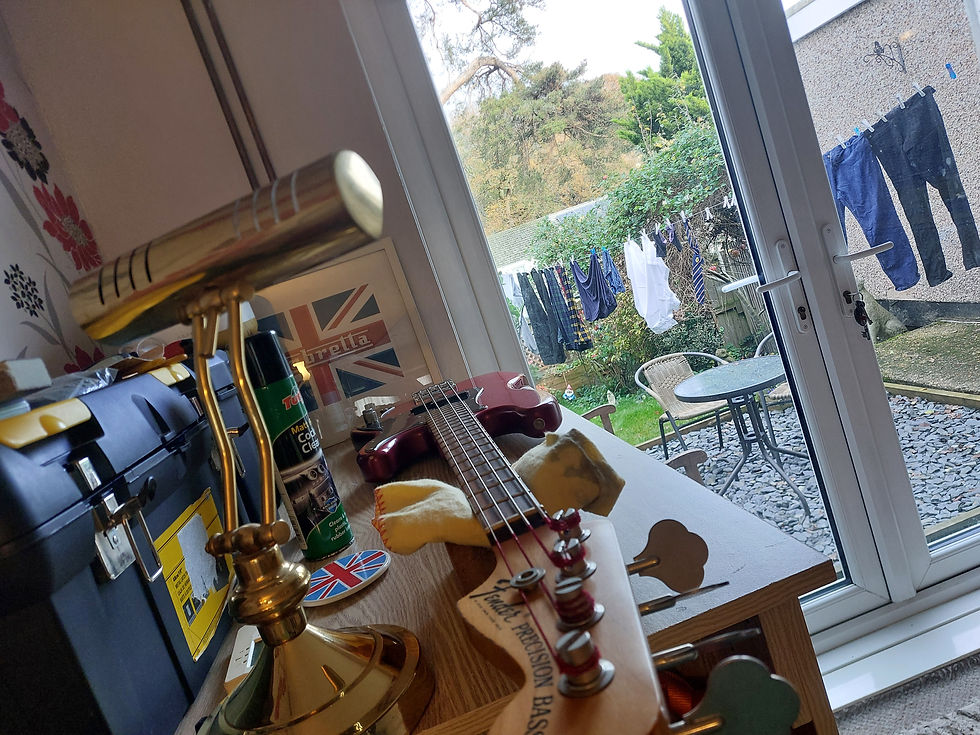REPLACING THE BRIDGE SADDLE ON AN EPIPHONE EJ-200
- Ryan Pearce
- 5 hours ago
- 2 min read

Every guitar that comes onto the workbench has its own story, and this week’s project features a beautifully maintained Epiphone EJ-200 – a modern tribute to one of the most iconic jumbo acoustics ever made. The owner brought it in with one clear goal: improved tone, stability, and playability through a brand-new bridge saddle.
Why the Saddle Matters
The saddle is one of the most underrated components of an acoustic guitar. It’s responsible for transferring the vibrations of the strings into the bridge and soundboard. A worn, poorly fitting, or low-quality saddle can cause issues such as:
Reduced volume and projection
Inconsistent tone across the strings
Poor intonation
Buzzing or action that’s too low
Upgrading or replacing the saddle can dramatically change how responsive and articulate a guitar feels.
Assessing the EJ-200
On arrival, the EJ-200 already had solid structural health – no lifting bridge, no neck-angle concerns, and frets in good shape. The saddle, however, had seen better days. It sat slightly lower than ideal and wasn’t making full contact with the slot, leading to reduced clarity and uneven string response.
A guitar like the EJ-200, with its large body and naturally vibrant tone, deserves a saddle that lets it speak at full volume.
Shaping the New Saddle
Replacing a saddle isn’t simply a swap-and-drop job. Each one needs careful shaping to match the existing bridge slot and the player’s preferred action. For this guitar, I:
Selected a high-quality blank – ensuring good density and predictable resonance.
Hand-fit the base to achieve maximum contact within the saddle slot.
Adjusted the height to balance comfortable action with strong projection.
Refined the top radius and intonation points for accurate pitch across all strings.
Polished the final profile for smooth string contact and a clean aesthetic.
All of this was done while the guitar was safely supported on the bench, with the strings loosened and maintained out of the way for efficient re-installation.
The Result
Once fitted and restrung, the EJ-200 immediately opened up. The guitar gained a noticeable increase in clarity, better low-end definition, and improved overall volume. Chords sounded more cohesive, and single-note runs had a crisp, articulate edge.
It’s always rewarding to hear a guitar respond to small precision adjustments – and the EJ-200 is one of those models that truly shines when properly set up.
Thinking About a Saddle Upgrade?
If your acoustic guitar feels a little dull, lacks sustain, or just hasn’t been playing at its best, a new saddle might be the upgrade it needs. A well-fitted saddle can bring new life to an instrument, improving tone and playability instantly.
Feel free to get in touch if your guitar could benefit from a setup, saddle replacement, or a full inspection. Your instrument deserves to sound its best.




Comments